Smartphones & Tablets | April 17, 2024
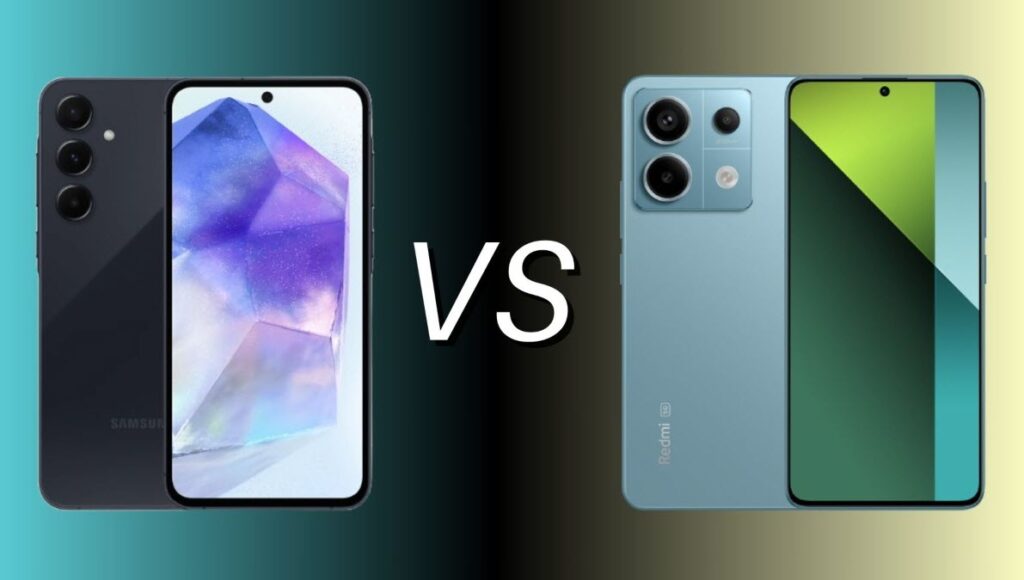
| Galaxy A55 | Redmi Note 13 Pro (5G) | |
| Screen | 6.6 inches of Super AMOLED technology, 19.5:9 format, FullHD+ resolution of 2,340 x 1,080 pixels, 120 Hz refresh rate, 240 Hz touch sampling rate, 1,000 nits maximum brightness, HDR10+ and Corning Gorilla protection Glass Victus+ | 6.67 inches of AMOLED technology, 20:9 format, FullHD+ resolution of 2,712 x 1,220 pixels, 120 Hz refresh rate, touch sampling rate up to 2,160 Hz, maximum brightness of 1,800 nits, HDR10+, Dolby Vision and Corning Gorilla Glass Victus |
| Main Camera | – 50 megapixel main sensor with f/1.8 focal aperture with video recording capacity in 4K resolution at 30 frames per second – Secondary sensor with 12 megapixel wide-angle lens with f/2.2 aperture – Tertiary macro sensor 5 megapixels with f/2.4 aperture | – 200 megapixel main sensor with f/1.7 focal aperture and support for 4K video recording at 30 frames per second – Secondary sensor with 8 megapixel wide-angle lens with f/2.2 focal aperture – Tertiary sensor with macro lens 2 megapixels with f/2.4 focal aperture |
| Selfie Camera | 32 megapixel main sensor with f/2.2 focal aperture with video recording capacity in 4K resolution at 30 frames per second | 16 megapixel main sensor with f/2.4 focal aperture with support for FullHD 1080p video recording at 60 frames per second |
| Internal memory | 128 or 256 GB of UFS 2.2 type | 256 or 512 GB of type UFS 2.2 |
| Extension | Expandable via microSD card up to 1 TB | Not expandable |
| Processor and RAM memory | – 4-nanometer, eight-core Exynos 1480 at 2.75 GHz max. – 8 GB of LPDDR4 type RAM | – Qualcomm Snapdragon 7s Gen 2 4 nanometers and eight cores at 2.4 GHz max. – 8 or 12 GB of LPDDR4 type RAM |
| Battery | 5,000 mAh with support for 25W fast wired charging (charger not included in the box) | 5,100 mAh with 67W fast charging (charger included in the box) |
| OS | Android 14 under One UI 6.1 (upgradable up to Android 18) | Android 13 under MIUI 14 (upgradable up to Android 15) |
| Connections | 5G, 4G LTE, dual-band Wi-Fi 802.11 a/b/g/n/ac/6, Bluetooth 5.3, GPS with A-GPS and GLONASS, NFC for contactless mobile payments and USB type C | 5G, 4G LTE, dual-band WiFi 802.11 a/b/g/n/ac, Bluetooth 5.2, GPS with A-GPS and GLONASS, NFC for contactless mobile payments and USB type C |
| SIM | Dual nano SIM | Dual nano SIM |
| Design | Colors: light blue, black, lilac and yellow | Colors: black, purple and blue |
| Dimensions and weight | 161.1 x 77.4 x 8.2 millimeters and 213 grams | 161.2 x 74.2 x 8 millimeters and 187 grams |
| Featured Features | In-screen fingerprint sensor, facial recognition, stereo speakers with Dolby Atmos and IP67 water resistance (submersion proof) | Optical fingerprint sensor under the screen, facial recognition, stereo speakers with Dolby Atmos, infrared sensor for controlling external devices, 3.5 millimeter headphone jack and IP54 water and dust resistance (splash protection) |
| Release date | Available | Available |
| Price | From 480 euros | From 290 euros |
Samsung and Xiaomi have two of the best mid-range phones currently available. We’re talking about the Galaxy A55 and Redmi Note 13 Pro. Both are engaged in one of the most interesting battles in the segment, as they boast some of the most competitive features. But now we’ll see which one is better. To do that, we’ll analyze all their differences in terms of features and prices in this comparison of the Galaxy A55 vs Redmi Note 13 Pro (5G version). Which one will win? Find out below.
The prices mentioned in the article may vary over time, so, we only analyze the differences as of the publication date.
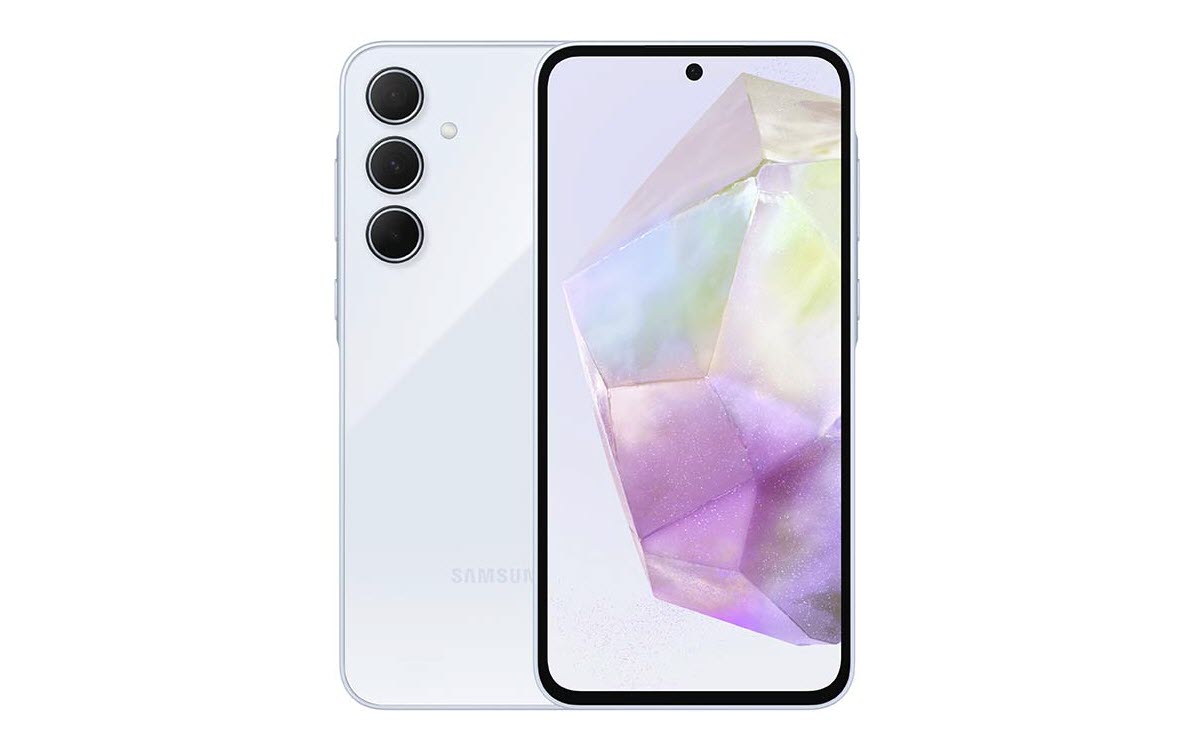
The Galaxy A55 and Redmi Note 13 Pro are two devices with very different personalities. In the case of the first, we have a mobile with a “very Samsung” aesthetic that we can find in other models of the brand. This consists of a floating camera with three sensors, straight frames and a hole in the screen.
The Redmi Note 13 Pro, on the other hand, is a bit more “original,” so to speak. This device also follows an aesthetic that Xiaomi has adopted in other models but with subtle changes that make them different from each other. Here, we have a design that also features straight edges and a display with a punch-hole for the selfie camera. Similarly, it has a triple camera setup, but it is housed in a camera bump that protrudes from the back.
There are also differences between the Samsung Galaxy A55 and the Xiaomi Redmi Note 13 Pro in terms of build quality. While the Samsung phone boasts a glass back, the Xiaomi device has a plastic one, a material that feels cheaper to the touch and is also present in the frames of both devices.
The dimensions are similar, although the Galaxy A55 is slightly wider and thicker than the Redmi Note 13 Pro 5G. It’s also almost 30 grams heavier.
Regarding the screens, the Xiaomi Redmi Note 13 Pro has a larger one. It measures 6.67 inches, unlike the Galaxy A55, which measures 6.6 inches. Furthermore, the Xiaomi’s screen has a higher resolution of FullHD+ 2712 x 1220 pixels. The Samsung phone’s screen is also FullHD+, but its resolution is 2340 x 1080 pixels, resulting in poorer image definition.
Both screens have a refresh rate of 120 Hz, but the touch sampling rate of the Galaxy A55 is 240 Hz and that of the Redmi Note 13 Pro goes up to 2160 Hz, but only in specific cases, such as gaming, for example. It’s also worth noting that Xiaomi’s phone screen reaches a maximum brightness of 1800 nits, much higher than the 1000 nits of the Galaxy A55 screen. In other words, the Redmi Note 13 Pro screen is almost twice as bright as the Galaxy A55’s.
On the other hand, the screen of the Samsung Galaxy A55 is compatible with HDR10+, just like the Redmi Note 13 Pro. However, only the latter supports the Dolby Vision standard.
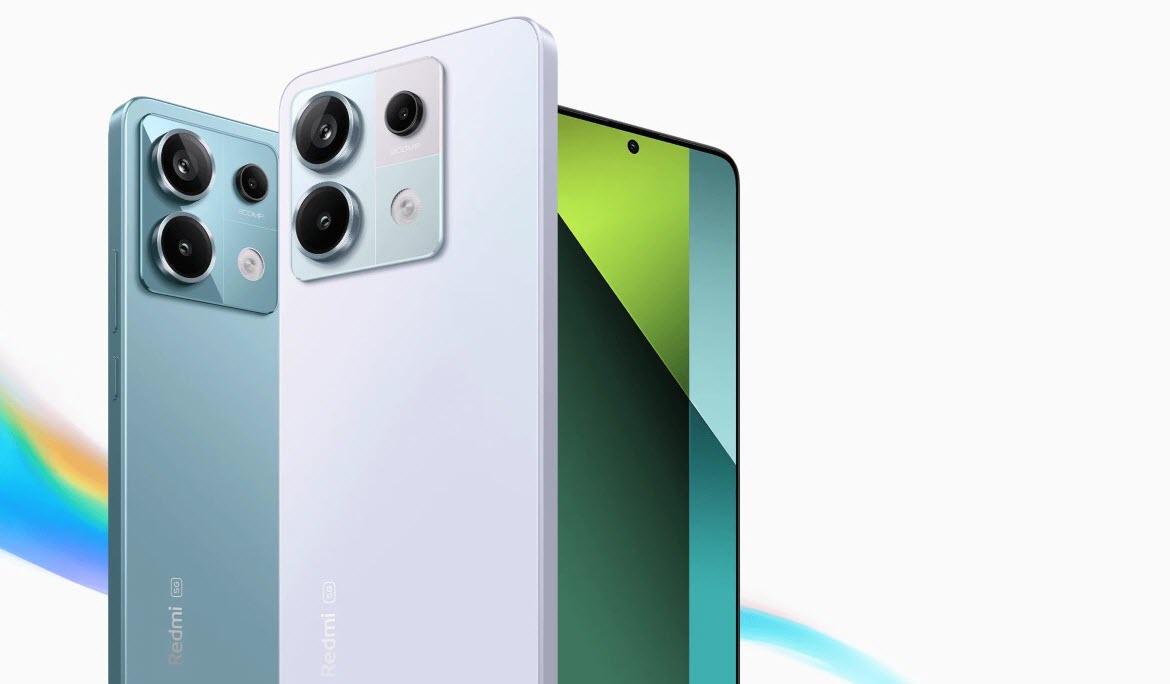
When facing two mid-range phones like these, we can’t expect low performance. Both perform quite well in this regard, as they are equipped with two of the best processors in the segment. We’re talking about the Exynos 1480 and Qualcomm Snapdragon 7s Gen 2. The former is chosen by Samsung for the Galaxy A55, while the latter resides inside the Redmi Note 13 Pro.
Both processor chipsets have a node size of 4 nanometers and eight cores, but the Exynos 1480’s cores reach a higher clock frequency of 2.75 GHz, allowing it to achieve better performance in all types of tasks. The eight cores of the Snapdragon 7s Gen 2 in the Redmi Note 13 Pro, on the other hand, operate at a maximum of 2.4 GHz. According to AnTuTu, the difference in power between one chipset and the other is not very significant, but it favors the Exynos piece, so we can say that the Galaxy A55 is smoother and faster when it comes to opening and running apps and games.
Regarding the memory options for each device, the Galaxy A55 comes with 8 GB of RAM and internal storage options of 128 GB or 256 GB, which can be expanded via a microSD card. The Xiaomi Redmi Note 13 Pro 5G also features 8 GB of RAM, as well as a 12 GB version. Additionally, its internal storage options are 256 GB or 512 GB. The disadvantage of the latter is that it does not support the use of a microSD card to expand internal memory.
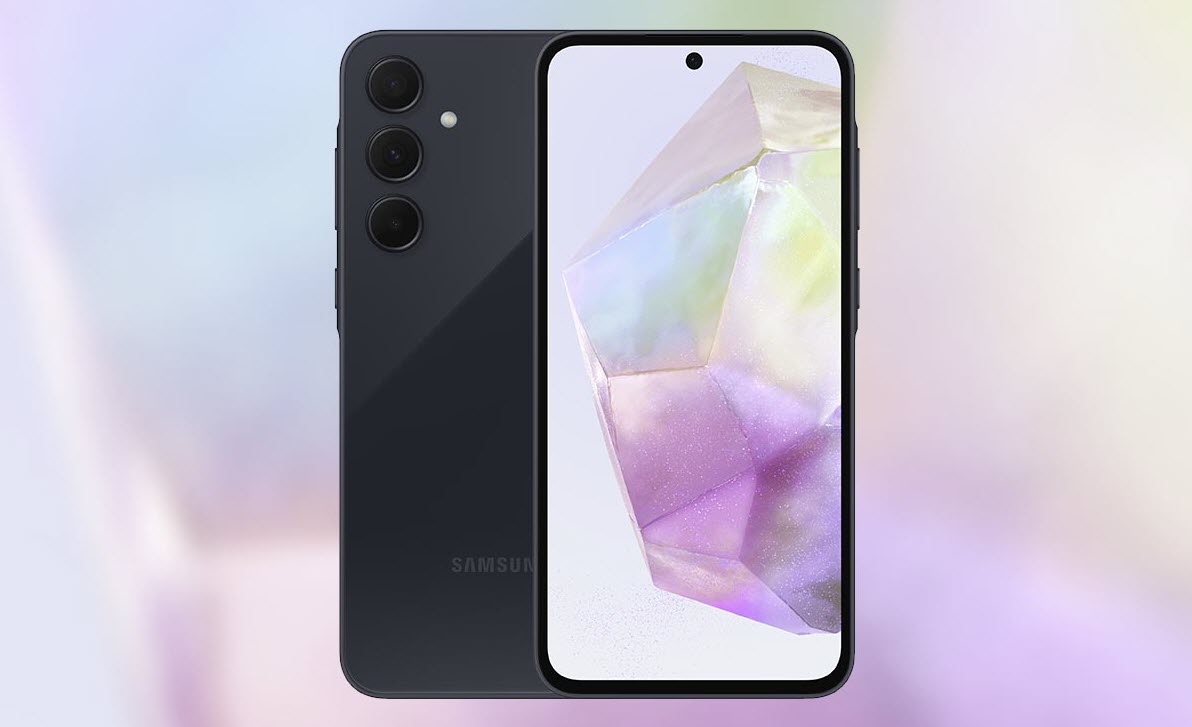
The Samsung Galaxy A55 and Redmi Note 13 Pro are equipped with triple rear cameras, but they have different sensors. In the case of the Galaxy A55, there’s a main 50-megapixel camera with an aperture of f/1.8, a 12-megapixel wide-angle camera with an aperture of f/2.2, and a 5-megapixel macro camera with an aperture of f/2.4.
On the other hand, the Redmi Note 13 Pro opts for a higher-resolution main sensor. It has a 200-megapixel main sensor with an aperture of f/1.7. Its wide-angle camera, however, is 8 megapixels with an aperture of f/2.2. The last camera on its back to complete the trio is a 2-megapixel macro camera with an aperture of f/2.4. Like the Galaxy A55, this phone can also record 4K video at 30 frames per second with its main camera.
As for the front camera of these devices, the Galaxy A55 has a 32-megapixel one with an aperture of f/2.2 and the ability to record video in 4K resolution at 30 frames per second. The Xiaomi Redmi Note 13 Pro 5G’s front camera is 16 megapixels with an aperture of f/2.2 and can record at a maximum resolution of Full HD at 60 frames per second.
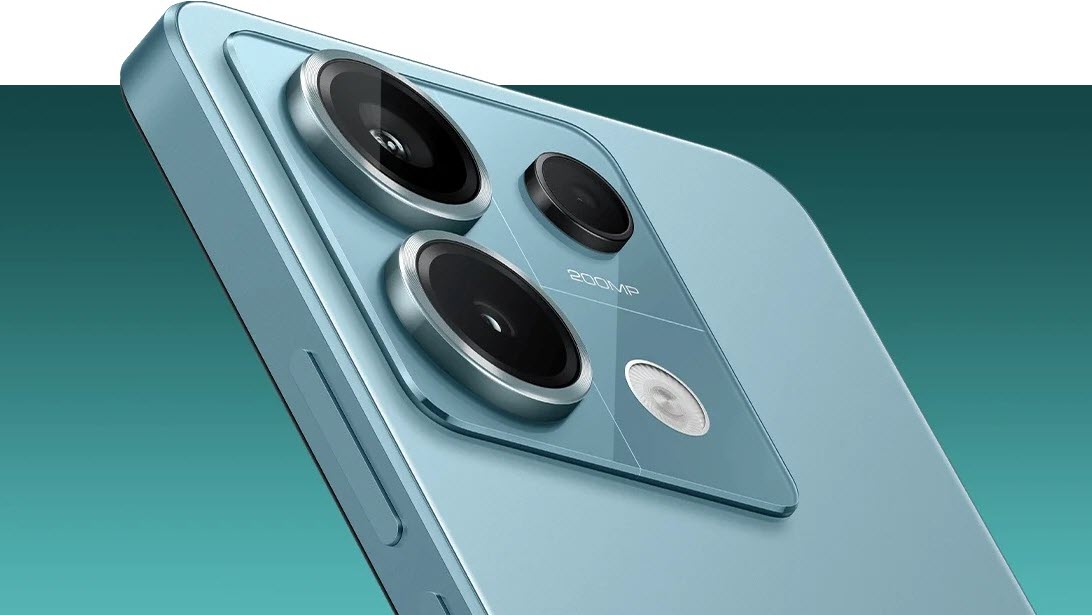
Continuing with the comparison of the Redmi Note 13 Pro vs Galaxy A55. The next point to analyze is their battery. Here, Xiaomi’s phone is superior, not only because it has a slightly larger battery than the Galaxy A55, but also because it supports much more powerful fast charging.
In detail, the Redmi Note 13 Pro has a 5,100 mAh battery with 67 W fast charging. The A55, on the other hand, has a 5,000 mAh battery with 25 W fast charging. Despite the difference in sizes, being minimal, the battery life achieved by both phones is very similar. However, Xiaomi’s phone only takes about 50 minutes to reach a full charge, while the A55 takes about 1 hour and 20 minutes. Additionally, the Redmi Note 13 Pro includes its charger in the box; the A55 does not.
Now, regarding connectivity options, the Samsung Galaxy A55 regains some advantage as it features Wi-Fi 6 and Bluetooth 5.3, unlike the Redmi Note 13 Pro, which has Wi-Fi 5 and Bluetooth 5.2. In the rest of the options, both share NFC connectivity, GPS with A-GPS, a USB Type-C port, and support for 5G and 4G LTE networks. However, only the Redmi Note 13 Pro comes with a 3.5mm headphone jack and an infrared sensor that allows it to act as a remote control for TVs and air conditioners, among other household appliances.
Regarding other features, both phones have an optical in-display fingerprint reader. They also feature facial recognition. Additionally, they have stereo speakers with Dolby Atmos support and boast water resistance. However, the A55 is IP67 certified, while the Redmi Note 13 Pro is IP54 certified. This means that while the Galaxy A55 is submersible, Xiaomi’s phone can only survive splashes and low-pressure jets.
There are also a couple of differences between the Redmi Note 13 Pro vs Galaxy A55 in terms of software. The first difference is found in the factory-installed Android version. While the Redmi Note 13 Pro comes with Android 13, the Samsung Galaxy A55 has Android 14. Of course, the former is already receiving the Android 14 update, but it is being rolled out gradually, so it has not yet been received globally. Additionally, in terms of update support, the Redmi Note 13 Pro only has two years guaranteed. The Galaxy A55 comes with four years. This means that the Redmi Note 13 Pro will be updatable until Android 15 and the A55 until Android 18.
We have reached the end of this comparison between the Samsung Galaxy A55 and the Xiaomi Redmi Note 13 Pro 5G. The only thing left to see is their prices, and then to determine which one is better and why. Let’s see.
The Galaxy A55 has a launch price of around 480 euros. It is expected to decrease in the coming months, but for now, that’s what it is. On the other hand, the Redmi Note 13 Pro can be purchased in 2024 for around 290 euros and up, as it has decreased in price. That said, the price difference between the two phones is quite significant, almost 200 euros, and favors the Redmi Note 13 Pro, being the cheaper of the two.
With this in mind, we can say that the Redmi Note 13 Pro is better than the Galaxy A55, but only in terms of value for money. While it has a better screen and battery, is lighter, and has a few features that the A55 doesn’t have, the Samsung phone is more complete. The latter not only boasts a design with better finishes, but it also has a better camera system, despite the resolution of its main sensor being lower than that of the Redmi Note 13 Pro. Additionally, the Galaxy A55 has a better processor, broader update support, IP67 water resistance, and more advanced connectivity features.
In conclusion, if you’re looking for a value-for-money phone with an excellent screen and battery, acceptable performance, and not much more, the Redmi Note 13 Pro is the ideal phone. Now, if the budget isn’t limited and you want a more premium phone with a better camera, a more powerful processor, IP67 resistance, and up to 4 years of Android updates, the Samsung Galaxy A55 is the way to go.